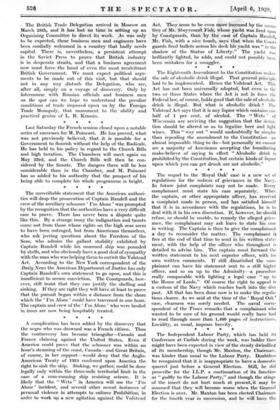.The sequel to the 'Royal Oak' case is a new
set of regulations for the redreSs of grievances in the Navy. In future joint complaints may not be . made. Every complainant must state his case separately. When the .captain, or other appropriate officer,, has received a cnniplaint made in person, and has satisfied himself that it is in _accordance. with the , regulations, he is to deal with it in his own discretion. If, however, he should refuse, or should be unable, to remedy the alleged griev- ance, the complainant may ask leave. to state his ease in writing. The Captain is then to give the complainant a day to reconsider the matter. _The complainant is free at the end of that time to send in his written state- ment, with the help of the officer who thrOnghout is detailed _to advise him. 'The Captain must forward .the written statement to. his next superior officer, with his own written comments. If still disSatisfied the corn: plainant can have his statement , sent to a still higher officer, and so on up to the Admiralty—a proeedure really comparable with fighting , a legal case " up to the House of Lords." Of course the right to appeal. is a custom of the Navy which reaches back into the dim past. All that has been done now is to make the regula- tions clearer. As we said at the time of the ' Royal Oak case, clearness was sorely needed. The _naval cone-, spondent of the Times remarks that a complainant who wanted to be sure of his ground, would, really have had to read_ through. more than 1,400 pages ,of ,instructions. Lucidity, as usual,. imposes brevity. * * * *






































 Previous page
Previous page